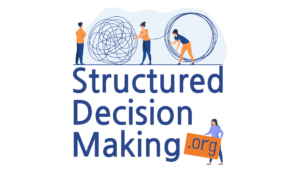Uncertainty
Uncertainty will be an important factor in many decisions. In most cases, the goal of further analysis of uncertainty is not necessarily to reduce it, but to better understand it and its implications for the decision. There are many analytical methods for treating uncertainty (e.g., sensitivity analysis, scenario analysis, Monte carlo simulation, etc.); the choice depends on the technical details of the problem. However, some general guidelines for dealing with uncertainty in the decision process include:
- Document uncertainties and identify those most likely to have an impact on the decision. There will be many uncertainties – only a few will matter.
- Characterize these uncertainties as explicitly and unambiguously as possible. This could be in the form of assigning probabilities to competing hypotheses, or developing probability distributions for uncertain parameters.
- Estimate the consequences of management alternatives probabilistically or under alternative scenarios. If the results are insensitive, either the uncertainty is unimportant in the context of the decision, or the evaluation criteria need to be re-defined to reflect the impact of the uncertainty on the decision.
- When different management alternatives have different distributions of outcomes, some alternatives being more risky than others, ensure that presentation of consequences captures the risk trade-offs. Use graphic representations such as risk profiles to support he consequence table where necessary.
- Report the level of agreement and disagreement among experts; this is important information for decision makers.
- Provide context for understanding the relevance and significance of uncertainty. For example, are results close to a recognized or legal standard? Are results near a threshold of severe impact or near a steep part of a cost curve? In general, what are the consequences of being wrong, and are there alternatives that are more robust than others?
- Where relevant, identify options for reducing uncertainty to aid future decisions (e.g., potential research, monitoring, management initiatives). Ensure that there is in fact some future decision that this reduction in uncertainty will support.
Key Ideas
- Uncertainty pervades most real-world decisions
- It isn’t necessary to incorporate and represent EVERY source of uncertainty – only those that play a central role in the dynamics of the decision
- There are various techniques available for representing uncertainty in the context of an SDM analysis

